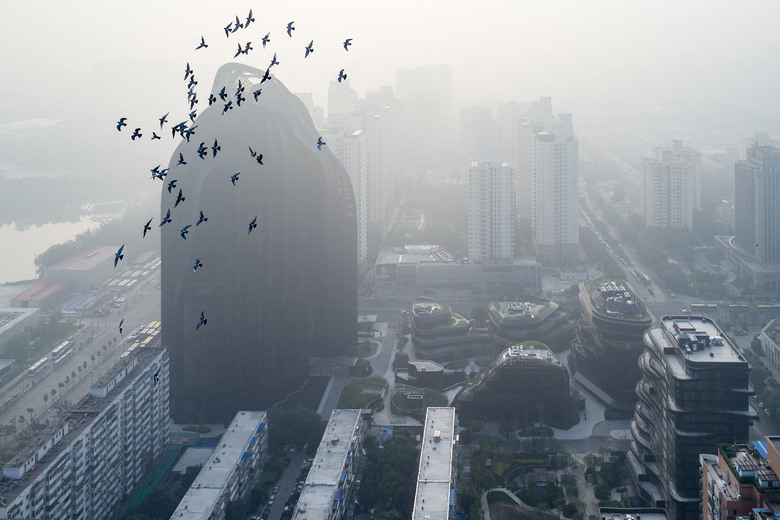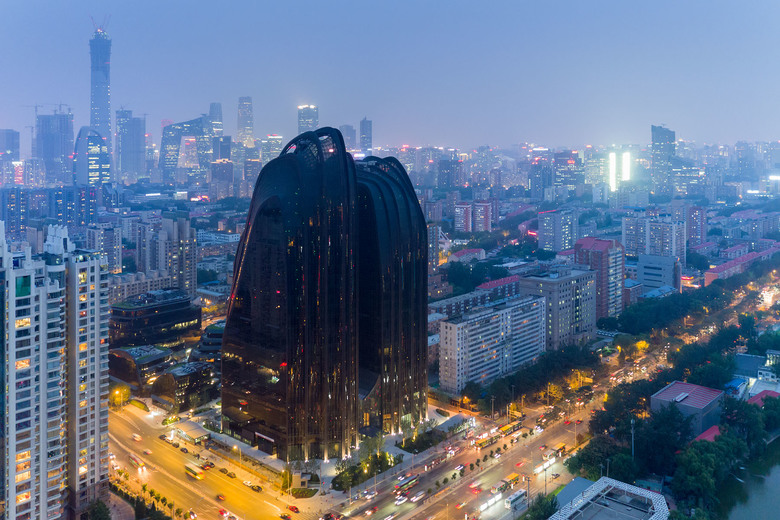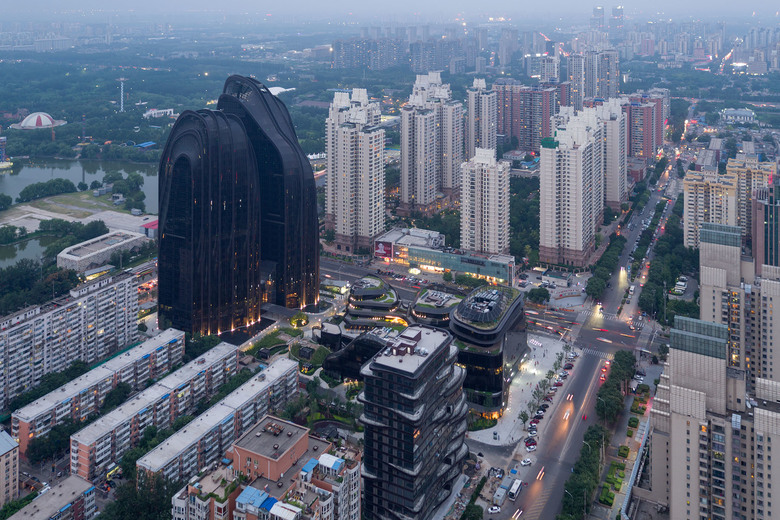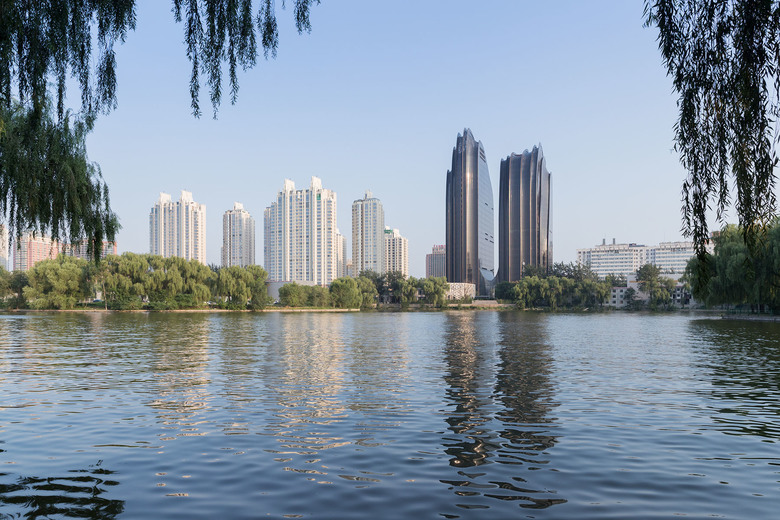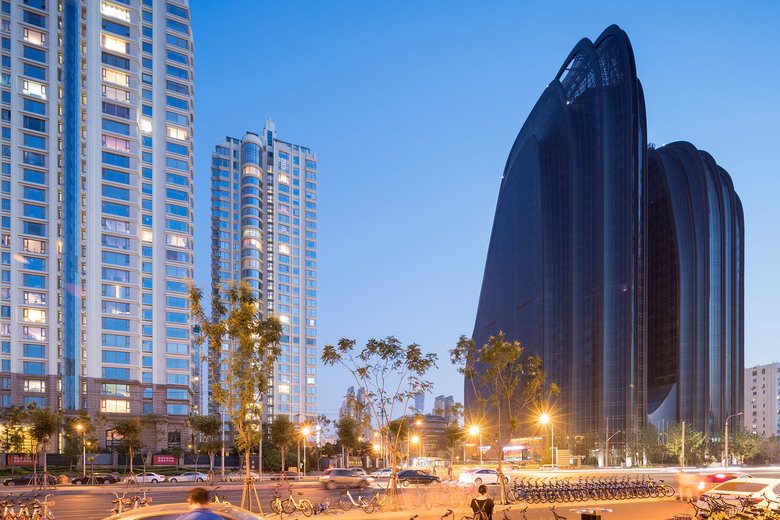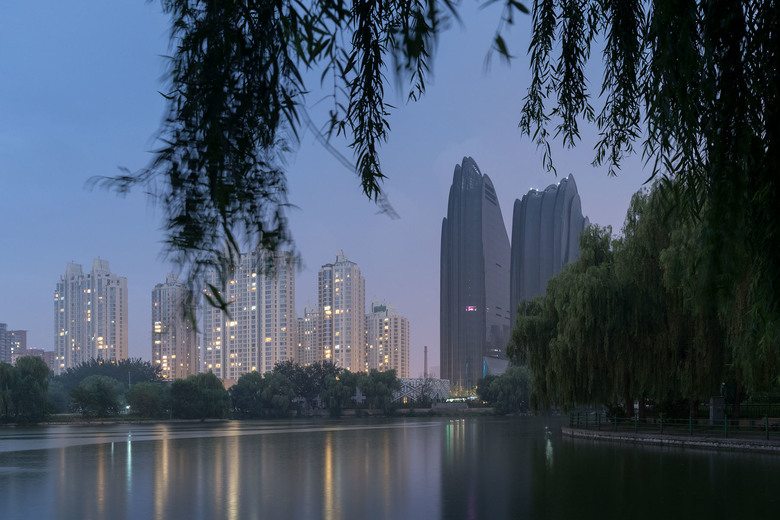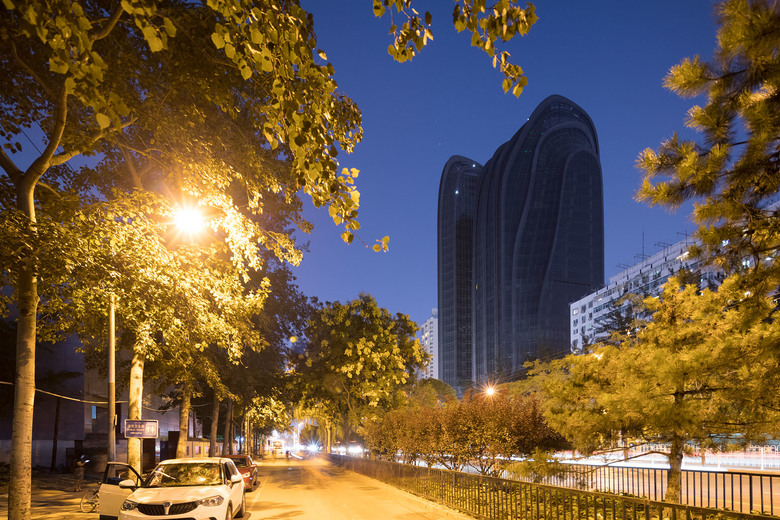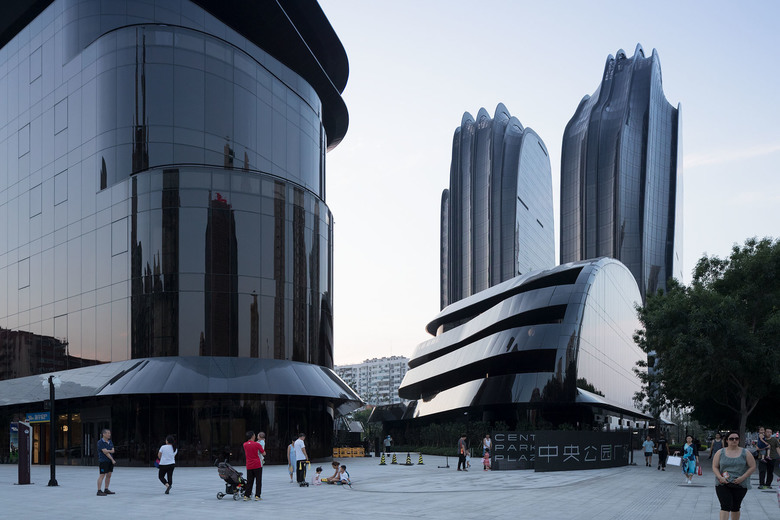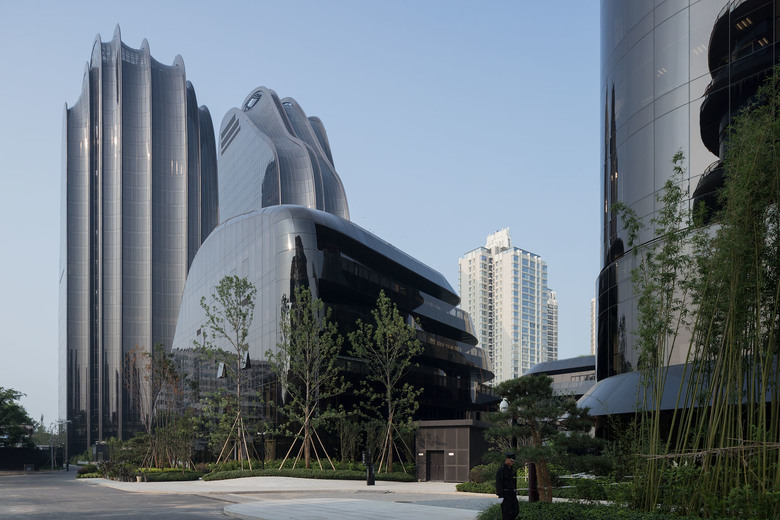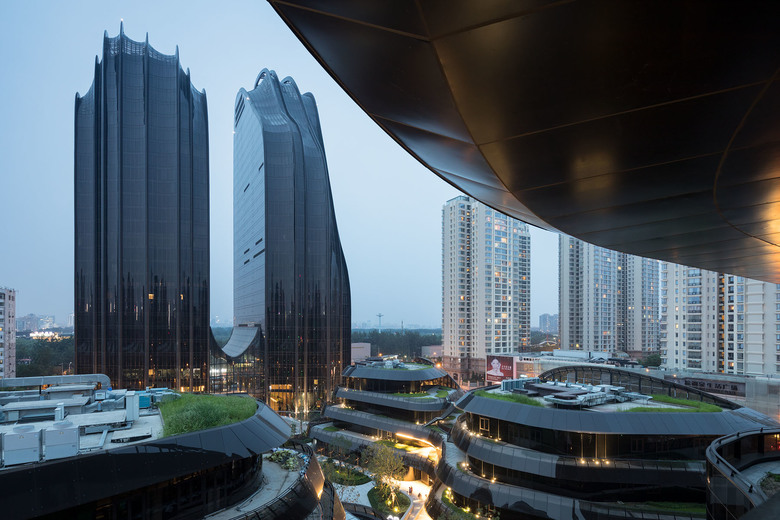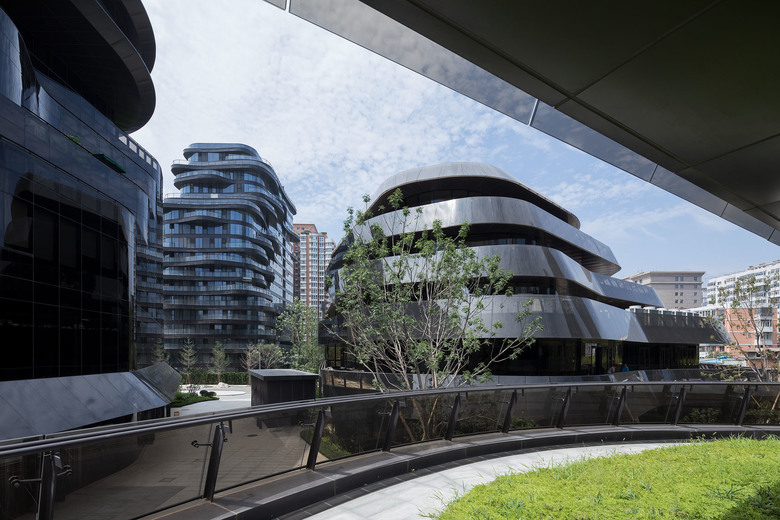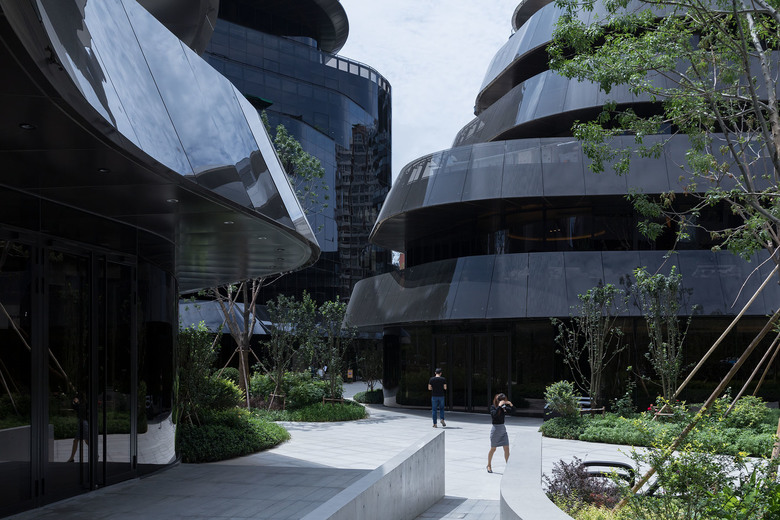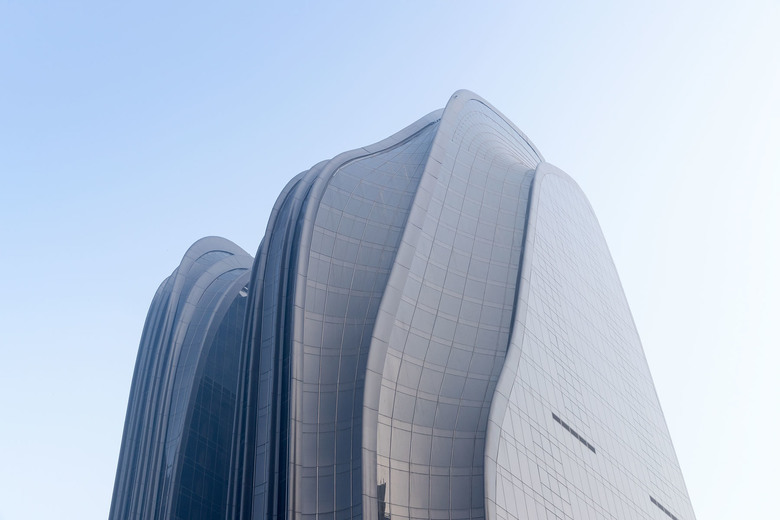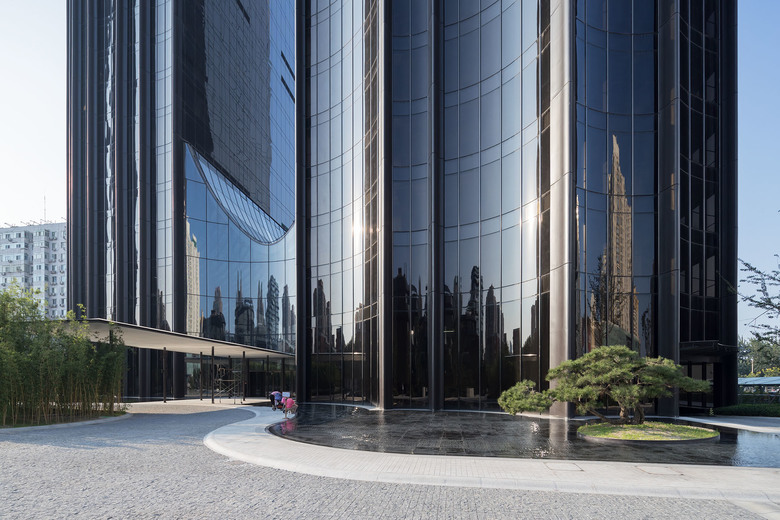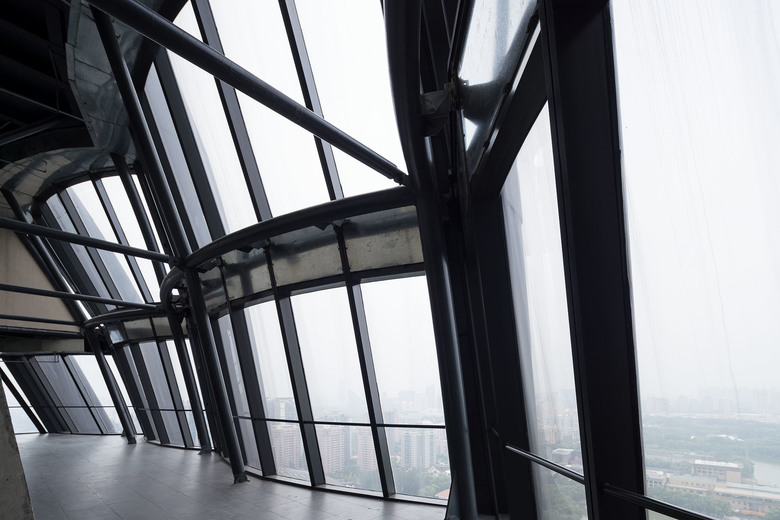Chaoyang Park Plaza
Beijing, China
MAD Architects, led by Ma Yansong, has completed “Chaoyang Park Plaza”, which includes the Armani apartment complex. Positioned on the southern edge of Beijing’s Chaoyang Park ─ the largest remaining park in Beijing’s central business district area ─ the 220,000 sqm complex includes 10 buildings which unfold as a classic Shanshui painting on an urban scale. Having a similar position and function as Central Park in Manhattan, but unlike the modern box-like buildings that only create a separation between the park and the city, “Chaoyang Park Plaza” instead is an expansion of nature. It is an extension of the park into the city, naturalizing the CBD’s strong artificial skyline, borrowing scenery from a distant landscape ─ a classical approach to Chinese garden architecture, where nature and architecture blend into one another.
Inspired by traditional Chinese landscape paintings, the design remodels the relationship of large-scale architecture within our urban centers. It introduces natural forms and spaces ─ “mountain, brook, creek, rocks, valley and forest” ─ into the city. The asymmetrical twin tower office buildings on the north side of the site, sit at the base of the park’s lake and are like two mountain peaks growing out of the water. The transparent and bright atrium acts like a “drawstring” that pulls the two towers together by a connecting glass rooftop structure.
The small-scale, low-rise commercial buildings appear as mountain rocks that have endured long-term erosion. They seem to be randomly placed, but their strategic relationship to one another forms a secluded, but open urban garden, offering a place where people can meet within nature in the middle of the city.
The two multi-story Armani apartments to the southwest continue this concept of “open air living” with their staggered balconies, offering each residential unit more opportunities to be exposed to natural sunlight, and ultimately feel a particular closeness to nature.
The overall environment is shaped by smooth, curved surfaces of black and white, creating a quiet and mysterious atmosphere. It is one that evokes the emotion and aesthetic resonance of a traditional Chinese ink painting, creating a tranquil escape from the surrounding, bustling urban environment. The landscape that weaves itself in between the buildings incorporates pine trees, bamboo, rocks and ponds ─ all traditional eastern landscape elements that imply a deeper connection between the architecture and classical space. Japanese graphic artist Kenya Hara led the design of the “simple” and “refined” signage system for the project.
The project has been awarded the LEED Gold Certification by the US Green Building Council, as the ideal of “nature” is not only embodied in the design concept, but in the innovation and integration of green technology as well. The vertical fins seen on the exterior glass façade emphasize the smoothness and verticality of the towers. They also function as the energy efficient ventilation and filtration system, drawing fresh air indoors. At the base of the towers, there is a pond, that while making them appear as if they are going into infinity, works as an air cooling system in the summer, decreasing the overall temperature of the interior.
Iwan Baan Captures MAD’s “Chaoyang Park Plaza”
Iwan Baan visited Beijing in early August, when the summer heat and humid climate left a heaviness in the air – one that could be seen and felt. Over the course of the days he was scheduled to shoot “Chaoyang Park Plaza”, he was dealt less than ideal photographic conditions. But, this is real Beijing, and it offered Iwan Baan the opportunity to photograph MAD’s latest project in its truest environment.
“Chaoyang Park Plaza” is shaped by smooth, curved surfaces that create a calming and surreal atmosphere. It translates natural forms and spaces from traditional Chinese ink landscape paintings into large-scale architectural forms, and introduces them into the urban context. With the grey atmosphere looming, Iwan Baan was able to capture MAD’s design in a way that evokes a different mood.
In his images, “Chaoyang Park Plaza”, even with its soft, organic lines, and poetic silhouette, offer a very strong visual contrast to its surrounding urban setting. Iwan’s photos show how MAD’s design confronts Beijing’s central business district, in a way that makes it distinct from the typical box-like towers positioned around it. Ma Yansong’s comment on this contrast, “We have the opportunity to try and create a different kind of city, that on a spiritual and cultural level, can be compared to the classical cities like Beijing, that are of Eastern philosophy and wisdom.”
- Architectes
- MAD
- Année
- 2017
- Client
- Smart-hero (HK) Investment Development Limited
- Équipe
- Ma Yansong (Principal Partner in Charge), Dang Qun (Principal Partner in Charge), Yosuke Hayano (Principal Partner in Charge), Kin Li (Associate Partner in Charge), Liu Huiying (Associate Partner in Charge), Fu Changrui, Zhao Wei, Li Guangchong, Lin Guomin, Bennet Hu Po-Kang, Nathan Kiatkulpiboone, Yang Jie, Julian Sattler, Younjin Park, Zhu Jinglu, Xue Yan, Zheng Fang, Matteo Vergano, Wing Lung Peng, Gustavo Maya, Li Yunlong, Tiffany Dahlen, Gustaaf Alfred Van Staveren
- Executive Architects
- CCDI Group
- Façade Consultant
- RFR Asia
- Façade Optimization
- RFR Asia, Sane Form Limited
- Interior Design (Office and Commercial)
- MADA s.p.a.m., Superclo
- Interior Design (Residential)
- ARMANI/CASA Interior Design Studio
- Graphic Design
- Kenya Hara + NDC China
- Landscape Design
- Greentown Akin Landscape Architecture Co., Ltd
- Interior Lighting Consultant
- M&W Lighting Limited
- Landscape Lighting Consultant
- Beijing Junhao Lighting Design Co., Ltd.
- LEED Certification Consultant
- Shenzhen Institute of Building Research Co., Ltd.
Projets liés
Magazine
-
-
Building of the Week
A Loop for the Arts: The Xiao Feng Art Museum in Hangzhou
Eduard Kögel, ZAO / Zhang Ke Architecture Office | 15.12.2025 -
